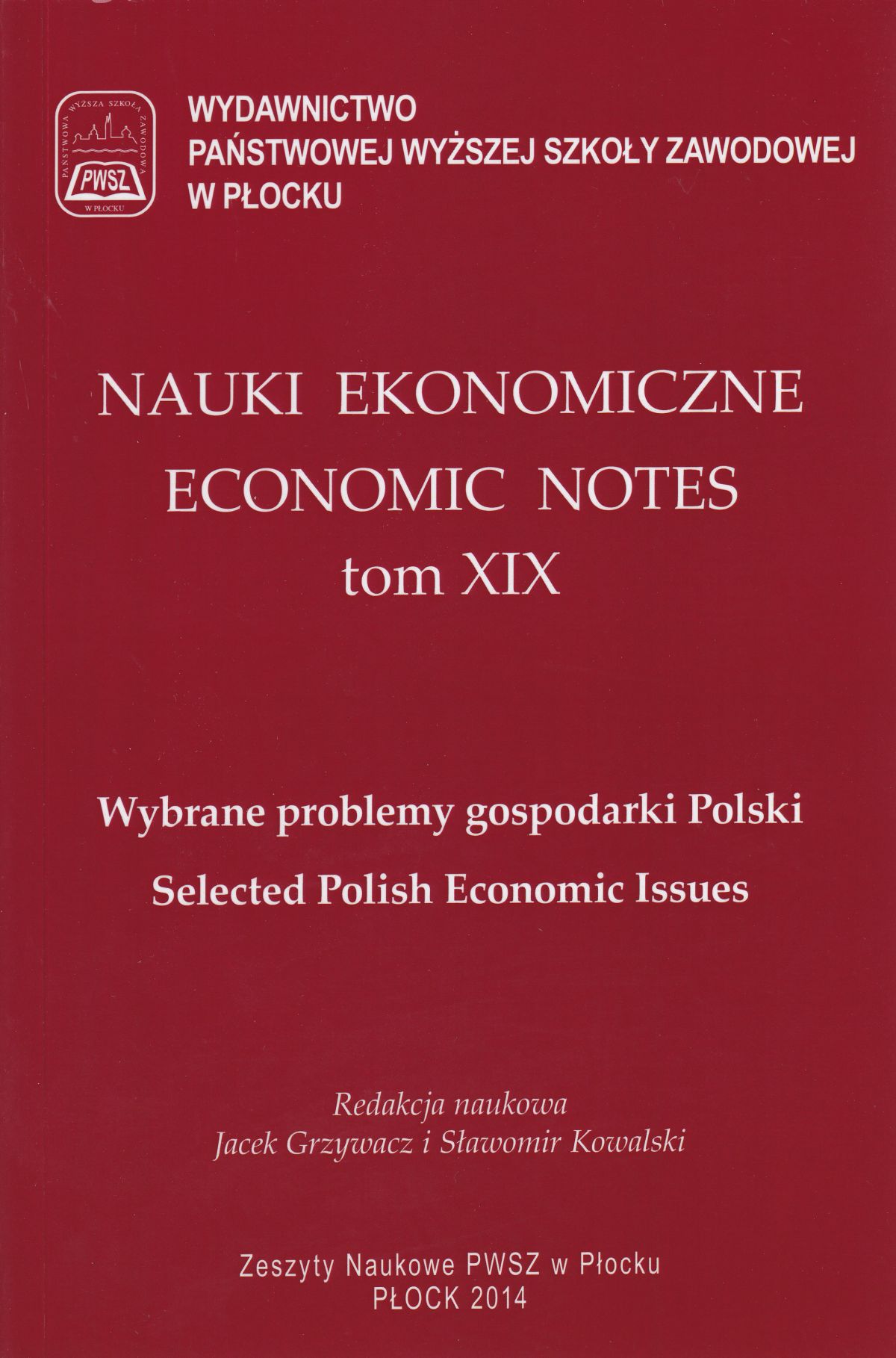POZYSKANIE POKOLENIA Y DLA BANKOWOŚCI ELEKTRONICZNEJ WYZWANIEM DLA POLSKICH BANKÓW
Abstrakt
Keywords: electronic banking, generation Y, social media, social marketing,
the adoption of e-banking
Summary
In the last decade there has been considerable development of
electronic banking channels. Despite the spread of the e-banking
services number of people in Poland using this form is still low
in comparison to Europe or the world, even among the young
people. This paper aims to show the ability to gain the young
people of Generation Y to the e-banking by using tools off ered
by social media and mobile communication devices. The paper
contains a description of the points/characteristics of Y Generation,
important from a marketing perspective, a discuss the current
level of use of the Internet by the Polish society and an analysis of
the involvement of Polish banks in social networks.
The paper shows that Polish banks do not take full advantage of social
media in the expansion of electronic banking channels and shows
that there are great opportunities in this area. Whereas Polish banks
are among the leaders in the region in the development of mobile
banking channel, although they are still at the beginning of the road.
Bibliografia
Bibliografi a:
Agora SA. World Internet Project Poland 2011. Warszawa: Agora S.A. & TP
Group, 2011.
Alt Florian, et al. „Location-based Crowdsourcing: Extending Crowdsourcing
to the Real World.” W Proceedings of the Sixth Nordic Conference on Human-
Computer Interaction: Extending Boundaries, 13–22. New York, 2010.
Bergh, Joeri van den, Matt ias Behrer. Jak kreować marki, które pokocha pokolenie
Y? Warszawa: Samo Sedno Edgard, 2012.
Borgul, Tomasz. Nextdoor — portal społecznościowy inny niż wszystkie? ekomunikacja.
pl Nowy wymiar komunikacji. 17 II 2012. htt p://www.ekomunikacja.
pl/2012/02/nextdoor-portal-spoecznosciowy-inny-niz.html#.UQ6742JU41N
(data uzyskania dostępu: Mar 3, 2013).
Browell, Dean. „The Social Bank. How to Approach the Social Footprint Your
Bank Already Has (Whether You Like It Or Not).” Virginia Banking, Nov/Dec
: 16-22.
Cohen, Lon S. 5 Ways Banks Are Using Social Media. Mashable. 11.11.2009. htt p://
mashable.com/2009/09/11/banks-social-media/ (data uzyskania dostępu: Jan
, 2013).
Czarnecki, Edward. „Zapewnianie bezpieczeństwa informatycznego organizacji
ze szczególnym uwzględnieniem czynnika ludzkiego systemu bezpieczeństwa.”
Przedsiębiorstwo w otoczeniu gospodarczym. Przestępczość gospodarcza. Płock, 2011.
Davis, Jim. „Connecting with customers in a multi-channel world.” SAS The
Power to Know, 2011: 4–5.
Deutsche Bank Research. „Social media in fi nance: Users want tangible benefi
ts, not friendship.” May 2011.
Dwojak, Łukasz. „Ewolucja strategii dystrybucji na rynku usług bankowych.”
Bank i Kredyt, Jun 2006: 35–46.
Erkki Liikanen, et al. High-level Expert Group on reforming the structure of the EU
banking sector FINAL REPORT. Brussels: European Commission, 2011.
Ernst & Young. The customer takes control. Global Consumer Banking Survey
Ernst & Young, 2012, 16-17, 22.
Georgios Angelakopoulos, Athanassios Mihiotis. „E-banking: challenges and
opportunities in the Greek banking sector.” Electronic Commerce Research, Vol.
, issue 3, Sep 2011: 297-319.
Golly, Thomas J. „MULTI-CHANNEL STRATEGY Research Online – Purchase
Offl ine- An Opportunity To Increase Marketing Effi ciency .” SEMPORA
Management Consultants, 2010: 1–2.
Górka, Jakub Henryk. „Specyfi ka ryzyka bankowości elektronicznej.” NBP
Materiały i Studia, Zeszyt 205 (2006): 1–96.
Cimochowski Grzegorz et al. Connected Poland How the Internet is Transforming
Poland’s Economy - . Boston: The Boston Consulting Group, 2011.
Hoehle, Hartmut, Eusebio Scornavacca, i Sid Huff . „Three decades of research
on consumer adoption and utilization of electronic banking channels: A literature
analysis.” Decision Support Systems, 9.05.2012: 122–132.
Kadys, Ewa. „Facebook fi nansów.” Miesięcznik Finansowy BANK, Nov 2012: 64–65.
Kawik, Artur. Użytkownicy social media szczególnie narażeni na phishing. SOCIALPRES
Media społecznościowe w praktyce. 25.01.2013. htt p://socialpress.
pl/2013/01/uzytkownicy-social-media-szczegolnie-narazeni-na-phishing/
(data uzyskania dostępu: 30.02.2013).
Kuchciak, Iwa. „Social media jako element strategii banków opartej na budowaniu
relacji z konsumentami.” Zarządzanie i Finanse - Zeszyty Naukowe,
: 349–366.
Levy, Moria. „WEB 2.0 implications on knowledge management.” Journal of
Knowledge Management, 2009, wyd. 1: 120–134.
LinkedIn Statistics BETA. Socialbakers. 30.01.2013. htt p://www.socialbakers.
com/linkedin-statistics/ (data uzyskania dostępu: 30.01.2013)
Man, Yeung Kit. „Factors aff ecting Customer’s Trust in Online banking.”
Hong Kong: Hong Kong Baptist University, 2006.
Matwiejczyk, Jacek. „Idzie nowe (zagrożenie).” Miesięcznik Finansowy BANK,
Nov 2012: 90–92.
Meyer, Thomas. „Majority of bank customers in Germany do research online.”
Deutsche Bank Research, 2010.
Miesięcznik Finansowy BANK. „Ranking 50 największych banków w Polsce
: Ranking banków w poszczególnych kategoriach.” Jun 2012.
Mikoś, Agnieszka. „Aroganci z Generacji Y: niecierpliwi, pewni siebie, nieprzystosowani
.” Personel Plus, Mar 2011: 6-14.
Modrzejewski, Dominik. Bankowym okiem. htt p://bankowymokiem.pl/blog/
entry/generacja_4.
Nowoczesny Bank Spółdzielczy. „Guzik: Kupuj.” Jan 2013: 31–34.
OECD. The Future of the Internet Economy, A Statistical Profi le. OECD, 2011.
ORACLE Financial Services. Social Media at the Starting Blocks: A Look at Financial
Institutions in Europe and the United States. Redwood Shores, CA 94065
USA: Oracle White Paper, February 2011.
O’Reilly, Tim. „What is Web 2.0: Design Patt erns and Business Models for the
next generation of software .” Communications & Strategies, First Quarter 2007:
–37.
„Poland Facebook Statistics.” 1.02.2013. htt p://www.socialbakers.com/facebook-
statistics/poland (data uzyskania dostępu: 1.02.2013).
Polasik, Michał. Bankowość elektroniczna. Istota-Stan-Perspektywy. Warszawa:
CEDEWU.PL, 2012.
Shearman, Sarah. „RBS group plans major online forum initiative.” Marketing
(marketingmagazine.co.uk), 16.09.2011: 4.
Shumaila Y. Yousafzai, et al. „A proposed model of e-trust for electronic banking.”
Technovation, 23 2003: 847–860.
SmartNet Research & Solutions. Fanpage Trends, styczeń 2013. Sotrender, 2013.
Stanislas Magniant, Eric Lévy-Bencheton. „Social CRM Towards enhanced
Customer Relationship Management.” 2011. htt p://atos.net/ (data uzyskania
dostępu: 25.02.2013).
Stawowski, Mariusz. „(Nie)bezpieczne smartfony – czy jesteśmy gotowi na
nowe zagrożenia?” Miesięcznik Finansowy BANK, Sep 2012: 58-59.
Zachariasen, Barbara. „Social Media for your Community Bank.” Mashbable.
11.2010. htt p://www.protectmybank.com/ (data uzyskania
dostępu:25.012013).
Złoch, Marcin. „Smartfon - klucz do bankowości.” Miesięcznik Finansowy
BANK, Jan 2013: 50–53.
ZPB. NETB@NK Raport Bankowość internetowa i płatności bezgotówkowe Podsumowanie
III kwartału 2012 roku. Warszawa: Związek Banków Polskich, 2012.
Ефременко, Дарья. „Поддержка клиентов в социальных медиа. Как, чем
и зачем.” 2012. htt p://di.by/upload/iblock/e35/Efremenko_Upravlenie%20
reputaciej.pdf (data uzyskania dostępu: 25.01. 2013).
